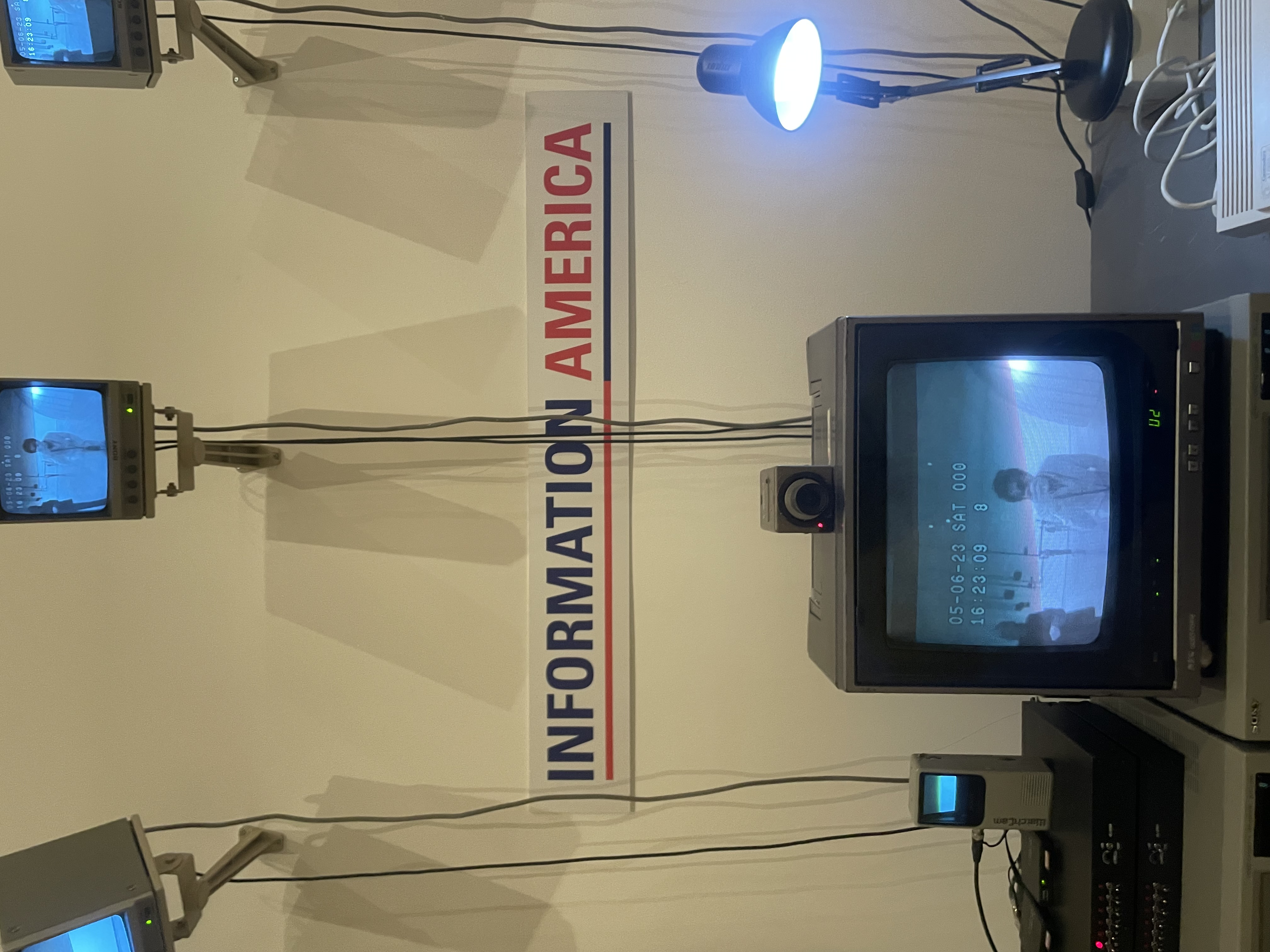Lost in Transmission
“Signals: How Video Transformed the World” at MoMA
March 5 – July 8, 2023
From narcissism to feedback, or from “Video: The Aesthetics of Narcissism” by Rosalind Krauss to Feedback: Television Against Democracy by David Joselit. This is the shift “Signals: How Video Transformed the World” at MoMA tries to effect, from video as a phenomenological figuring of the self to a networked mediator of information. The change in emphasis felt promising, even refreshing, in the very first gallery. Joan Jonas and Richard Serra were nowhere to be seen. Gretchen Bender’s TV Text and Image (Donnell Library Center Version) (1990), a grid of monitors broadcasting various channels, faced the entrance head-on. Words affixed in vinyl — gender technology, revolution, no criticism — on each screen tinge the otherwise benign flow of news reports, sitcoms, and advertisements. Whereas Pictures Generation appropriation can often feel overly committed to its source material in its Adamic moment of perception, Bender’s touch was just light enough and appropriately prescient as the exhibition’s opening gesture. A gallery later, Song Dong’s Broken Mirror (1999) enacted the quasi-iconoclasm of the exhibition’s argument: A hammer suddenly smashes a mirror set in front of the camera, revealing the social world, here ’90s Beijing, busying around it.

These works were, however, the pithier entrants in the exhibition. The installations surrounding Broken Mirror — from Nam June Paik’s Good Morning, Mr. Orwell (1984) to Dara Birnbaum’s Tiananmen Square: Break-in Transmission (1990) — established a formal prototype on which “Signals” fixated: typically, gridded configurations of screens, each one channeling images and recordings related to a historical moment or event. Video in this new reading is meant to parse data, control visibility, and articulate an ad hoc ideology critique; it deforms publics or generates minoritarian countermodels. One can practically guess the sentiments in each gallery text by the time the block of monitors in Ming Wong’s Windows on the World (Part 2) (2014) or the single-camera interviews in Nil Yalter’s Tower of Babel (Immigrants) (1974–77/2016) come into view.
Curators Michelle Kuo and Stuart Comer posited a medium-specific history of video, yet in its distance from optical, material, and formal understandings, this approach tended to dematerialize video into mere information. Video is only aesthetically incidental, for example, in a research-based project like Carlos Motta’s We Who Feel Differently (2012). A more spatially nuanced environment like Amar Kanwar’s The Torn First Pages (2004–08), in its rhythm of suspended surfaces and modulated lattices, almost registered like a Lissitzky Demonstrationsraum in this context.
This emphasis on video as conduit for information led to a curious historical asymmetry: ’60s and ’70s video, with its working-through of technological cruel optimism; moving image of the ’90s, with its post-’89 encounter with globalization and expanded media networks; and very recent work, with its internalization of algorithmic aesthetics, took precedence. Lost here was a funny moment of video circa 2010, still structured by mass-cultural genres like reality TV and still fascinated with what it saw as the post-internet. Narrative as such had little purchase in “Signals,” infatuated as it was with political interventionism. A figure like a Ryan Trecartin, a Hito Steyerl, or even a Petra Cortright, no matter how overexposed or overestimated, felt repressed or disavowed in this account of video. MoMA’s expedited, ongoing revision of its own historical tenants — high modernism, the medium as such, canonicity — has led to wanly hybridity, neither a robust genealogy of video nor an expanded investigation of its premises beyond moving-image formats. Video not beside but lost to itself.